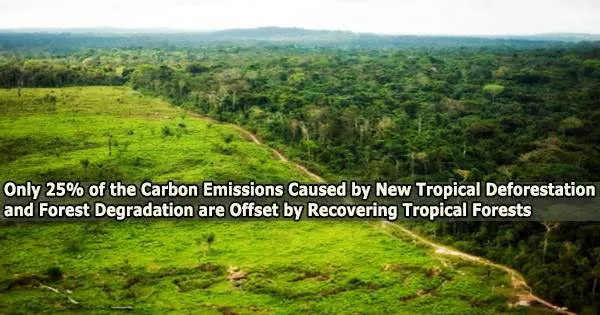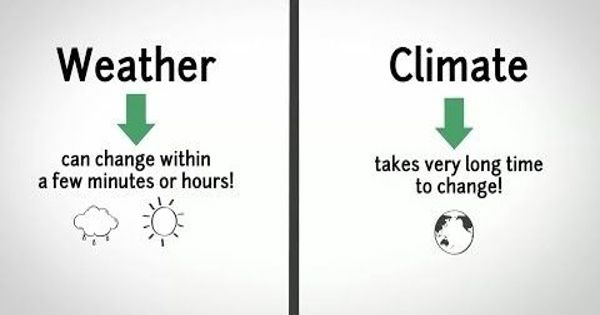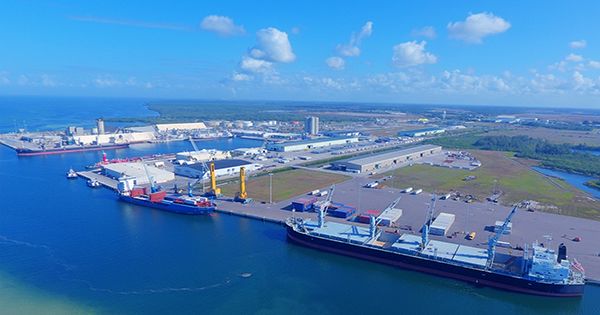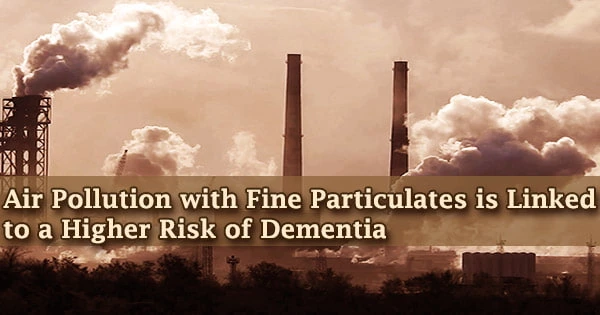According to a groundbreaking global study, rates of forest regrowth are being quickly surpassed by deforestation and forests lost or destroyed as a result of human and environmental change, such as fire and logging.
The protection of tropical forests is essential for preventing both ecological and climatic problems. The study, led by the University of Bristol and published today (March 15, 2023) in Nature, emphasizes the potential carbon storage and existing limitations of forest regrowth to tackling such crises.
According to the research, secondary forests that are regrowing in previously cleared land and degraded forests that are recovering from human disturbances together remove at least 107 million metric tons of carbon from the atmosphere each year throughout the tropics. The group of international researchers used satellite data to quantify the rates of aboveground carbon stock recovery across the three largest tropical forests on the planet.
However, the total amount of carbon absorbed by aboveground forest growth was only sufficient to offset about a quarter (26%) of the current carbon emissions from tropical deforestation and degradation. This is despite the fact that the results show the significant carbon value of conserving recovering forests throughout the tropics.
Lead author Dr. Viola Heinrich, who recently gained a Ph.D. in physical geography at the University of Bristol School of Geographical Science, said, “Our study provides the first pan-tropical estimates of aboveground carbon absorption in tropical forests recovering from degradation and deforestation. While protecting ancient tropical forests remains the priority, we demonstrate the value in sustainably managing forest areas that can recover from human disturbances.”
Focusing on the protection and restoration of degraded and secondary tropical forests is an efficient solution for building robust mechanisms for sustainable development of tropical countries. This aggregates monetary value for the local to global environmental services provided by these forests, in turn benefiting local populations economically and socially.
Dr. Luiz Aragão
Environmental scientists at the University of Bristol worked with experts from Brazil’s National Institute for Space Research (INPE), which included collaborations with scientists from across the U.K., Europe, and U.S.
The team used satellite datasets that can distinguish deforestation from other human-induced disturbances, such as logging and fire, to determine the types of forests regrowing. Combined with information on aboveground carbon from the European Space Agency, and environmental variables, the team modeled the spatial patterns of forest regrowth in the Amazon, Central Africa and Borneo.
They found the type of human disturbances in Borneo resulted in the greatest carbon reductions in degraded forests, primarily due to the high intensity logging of economically valuable trees, compared to in the Amazon and Central Africa. Additionally, the climate and environment on Borneo also results in carbon accumulating about 50% faster than in the other regions.
“The carbon recovery models we developed can inform scientists and policy makers on the carbon storage potential of secondary and degraded forests if they are protected and allowed to recover,” said Viola, now a Research Associate at the University of Exeter.
The team also found that one third of forests degraded by logging or fire were later completely deforested, emphasizing the vulnerability of the carbon sink in these recovering forests.
“Tropical forests provide many vital direct resources for millions of people and animals. At large scales we need to protect and restore tropical forests for their carbon and climate value. On the local scale, people need to be allowed to continue to use the forests sustainably,” added Viola.
Co-author Dr. Jo House, Reader in Environmental Science and Policy at the University of Bristol, who has authored many international assessments on climate change and forests, said, “Countries have repeatedly made pledges to reduce deforestation and forest degradation and restore deforested areas.”
“This is the most cost-effective and immediately available way to remove carbon from the atmosphere, alongside many co-benefits such as biodiversity, flood control and protection of indigenous peoples’ livelihoods. Yet targets are repeatedly missed due a lack of serious international coordinated support and political will. Our research demonstrates that time is running out.”
At COP27, hosted by Egypt last November, Brazil, Indonesia, and Congo forged a South-South alliance to protect rainforests. January 2023 saw the inauguration of Brazil’s new president Luiz Inácio Lula da Silva, who has pledged to undo the damage caused by preceding policies and revert to protecting and restoring the Amazon.
Co-author Dr. Luiz Aragão, Head of Earth Observation and Geoinformatics Division at the National Institute for Space Research (INPE) in Brazil, said, “Focusing on the protection and restoration of degraded and secondary tropical forests is an efficient solution for building robust mechanisms for sustainable development of tropical countries. This aggregates monetary value for the local to global environmental services provided by these forests, in turn benefiting local populations economically and socially.”
In order to improve estimates of carbon gains and losses from various types and intensities of forest disturbance throughout the tropics, the team now wants to build on this research.















